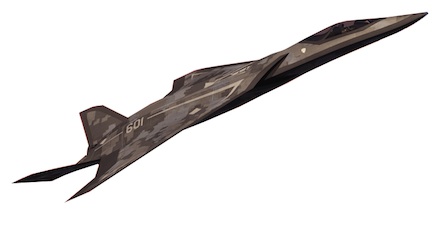Lockheed Martin's Skunk Works division has revealed a conceptual next-generation fighter design that offers the first hints of an ambitious, long-term technology strategy for the new class of tactical aircraft that will emerge after 2030.
The concept - published in a 2012 calendar distributed to journalists - indicates the company will continue to seek new breakthroughs in performance despite the risk-averse culture of today's weapons buyers in the US military.
Featuring an F-22-like nose, an unusually contoured wing and nearly flat canted tails, the concept suggests a new level of speed and agility.
 |
|---|
| ©LOCKHEED MARTIN |
"Simply removing the pilot from an aircraft or introducing incremental improvements in signature and range does not constitute a generational leap in capability," Lockheed said in response to Flightglobal's questions.
"These improvements are already being looked att for our fifth generation fighters," the company added.
Instead, possible technologies for a next-generation fighter should include "greatly increased speed", more range and new features like self-healing structures and multi-spectral stealth, the company said.
Such capabilities must be supported by new breakthroughs in propulsion, materials, power generation and weapons, Lockheed said, adding some of these are "yet to be fully imagined".
Lockheed acknowledged that breakthrough performance will not come cheap.
"This will require another significant investment in research and development from a standpoint of time and money," the company said.
So far, USAF leaders have not been committal about plans for a sixth-generation fighter to replace the F-22 after 2030. The air force is instead focused on buying 1,763 F-35As to replace the F-16 and A-10 fleets. New development funding is largely devoted to fielding a next generation bomber by the end of the decade.
Meanwhile, the USAF has initiated the first steps towards working on a next generation fighter. In November 2010, the Air Combat Command asked companies to submit ideas for the technologies and performance for a new fighter that would appear in 20 years. The Air Force Research Laboratory also is funding research on basic technologies that could feed into a sixth generation fighter programme.
Source: Flight International



















